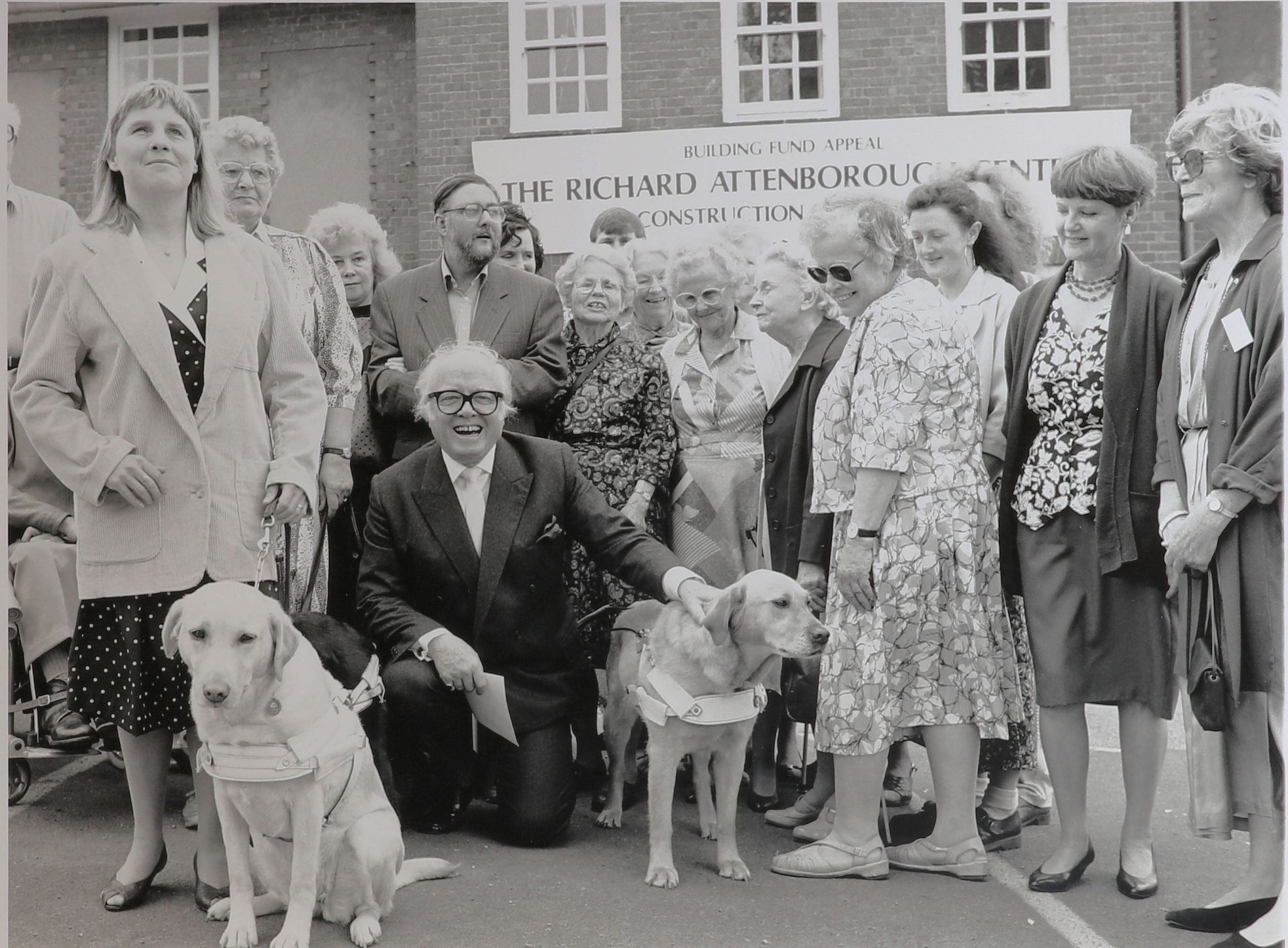Our History

Attenborough Arts Centre was established in 1997 by Lord Richard Attenborough. We continue to be inspired by his vision that ‘Art is not an elitist gift for a few select people; art is for everyone.’
From 1982 to 1985 Lord Attenborough chaired the government-appointed Committee of Inquiry into the Arts and Disabled People, the first comprehensive review of the cultural provision for disabled people nationally. It concluded that accessible facilities were severely lacking and Lord Attenborough called for a purpose-built arts centre to be created.
Having led a campaign with local Leicester communities to raise funds for such an inclusive, multi-use arts venue, the Richard Attenborough Centre for the Arts and Disabled People was opened by Lord Attenborough and Princess Diana of Wales in a special ceremony on 27 May 1997.
In his maiden speech in the House of Lords in 1994, Lord Attenborough said:
“From the very earliest of times the arts have been an instinctive essential of our humanity. They are a miraculous sleight of hand which reveal the truth and a glorious passport to greater understanding between the peoples of the world. The arts not only enrich our lives but grant us the opportunity to challenge accepted practices and assumptions… [and] give us a means of protest against that which we believe to be unjust.”
Today Attenborough Arts Centre stays true to Lord Attenborough’s vision by identifying and removing barriers to inclusion. We are delighted that Michael Attenborough CBE continues the Attenborough family connection today, as our Patron.
The work of Attenborough Arts Centre started in the late 1970s when a group of local artists started running art classes in rooms at the University of Leicester, including in the basement of the Percy Gee building. Led by Alan Caine, a curriculum of art classes was established, gaining a loyal following. Accessibility was an important consideration from the beginning. When Lord Attenborough began the campaign to create Attenborough Arts Centre at the University, Alan Caine and his fellow tutors were closely involved in developing the plans for the new building, led by inaugural director, Eleanor Hartley. The classes then took residence at Attenborough Arts Centre and have continued to become the Creative Courses programme we know today! Some of our original tutors are still teaching with us and make a hugely valuable contribution to the ongoing life of Attenborough Arts Centre. Since opening, the organisation has been renamed twice: firstly to Embrace Arts and then to its current name, Attenborough Arts Centre.
About Richard Attenborough
Born on 29 August 1923, Richard was the eldest of the three sons of Mary and Frederick Attenborough. He grew up on what is now the University of Leicester campus, during his father’s tenure as Principal of what was then University College, Leicester between 1932 and 1951. Richard attended Wyggeston Grammar School for Boys and became interested in the arts and acting at a young age, making his stage debut at Leicester’s famous Little Theatre in 1937. Following service for the Royal Air Force during the Second World War, he attended the Royal Academy of Dramatic Art in London, before going onto pursue a hugely successful and wide-ranging career in theatre and film.
Richard Attenborough and his wife Sheila Sim were two of the original cast members of Agatha Christie’s The Mousetrap which opened in 1952 at the Ambassadors Theatre and ultimately became the world’s longest running stage production.
Richard Attenborough earned his way to stardom as a film actor by starring in many now classic films such as Brighton Rock (1948), The Great Escape (1963) and Jurassic Park (1993). As a producer and director he was prolific, his seminal films including Oh! What a Lovely War (1969), Cry Freedom (1987) and Shadowlands (1993). He is perhaps best known for directing Gandhi (1982), which won 8 Academy awards including Best Director and Best Picture.
Lord Attenborough was a frequent visitor to and supporter of the University of Leicester throughout his life and was made an Honorary Distinguished Fellow, the University’s highest honour, in 2006.
As well as Lord Attenborough’s work in establishing Attenborough Arts Centre in Leicester, he was President of the Muscular Dystrophy campaign for 33 years, becoming the charity’s Honorary Life President in 2004. He was also the patron of the United World Colleges movement which established schools around the world, championing education that does not judge upon colour, race, creed or religion, including Waterford Kamhlaba United World College in Swaziland where he established the Sheila and Richard Attenborough Fine Arts Centre and the Jane Holland Centre for Creative Learning in memory of his daughter who perished, along with her daughter Lucy, in the 2004 Boxing Day tsunami. Lord Attenborough’s name is also given to the Attenborough Centre for the Creative Arts at the University of Sussex, after his former role as Chancellor of the University.